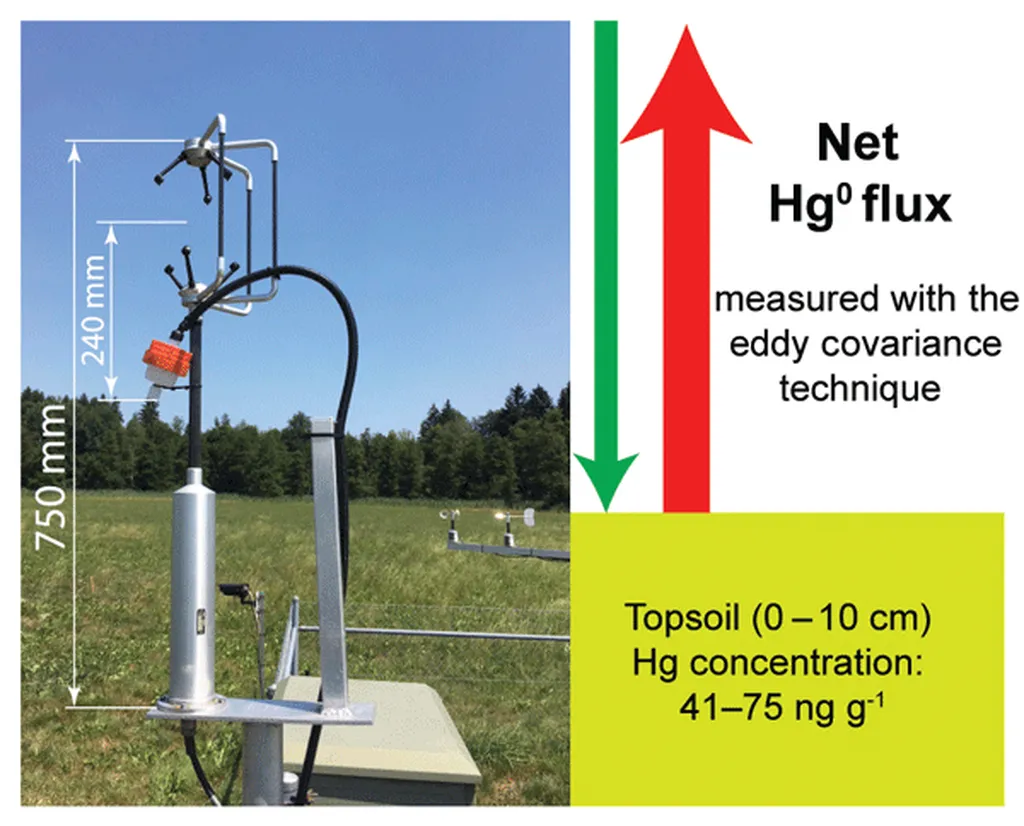In the quest to better understand and measure the intricate dance of turbulence in the atmosphere, researchers have developed a novel framework that could revolutionize how we estimate eddy fluxes. This breakthrough, published in the journal *Atmospheric Measurement Techniques*, addresses significant limitations of the standard eddy-covariance method, which has been a cornerstone of atmospheric research for decades.
The standard approach, while valuable, has its constraints. It relies on fixed averaging times, typically 30 minutes, and offers limited frequency resolution. These limitations can lead to biases and an inability to capture fast-changing dynamics, which are crucial for understanding rapid ecosystem responses to environmental changes. Enter the work of G. Destouet, a researcher at UMR SILVA, INRAE, AgroParisTech, Université de Lorraine in Nancy, France, who, along with his team, has introduced a method based on wavelet transforms. This innovative approach allows for high-resolution analysis of fluxes in both time and frequency domains.
“Our method adaptively localizes turbulent scales using a metric derived from the vertical component of the Reynolds stress tensor,” explains Destouet. “This enables more accurate flux estimation under varying turbulence conditions.” The proposed metric is akin to the u* and σw tests but is adapted to the time–frequency setting. By decoupling the filtering of perturbative scales from flux calculations, the new method allows for flexible averaging times, making it particularly suitable for studying rapid ecosystem responses to environmental changes.
The implications for the energy sector are profound. Accurate measurement of eddy fluxes is crucial for understanding the dynamics of carbon uptake and respiration, which are key factors in climate modeling and energy production. The improved localization of turbulent scales results in higher estimates of carbon uptake during summer and a more accurate assessment of nighttime respiration compared to standard eddy-covariance estimates. This could lead to more precise carbon accounting and better-informed decision-making in energy policy and management.
The methodology is implemented in the Julia package TurbulenceFlux.jl, making it readily accessible for practical applications. “We show application of the framework at the beech forest site Hesse (code FR-Hes) and demonstrate its relation with standard eddy-covariance calculations,” says Destouet. The proposed method allows for varying the averaging time without impacting the filtering of the perturbative scales, thus producing estimates of CO2, latent heat, and sensible heat fluxes with faster dynamics.
The research not only enhances our understanding of atmospheric turbulence but also paves the way for more accurate and efficient energy management. As the world grapples with the challenges of climate change, such advancements are invaluable. The work of Destouet and his team represents a significant step forward in atmospheric measurement techniques, offering a more nuanced and precise tool for studying the complex interactions between the atmosphere and ecosystems.

